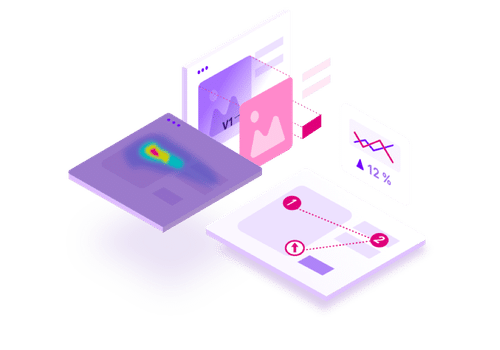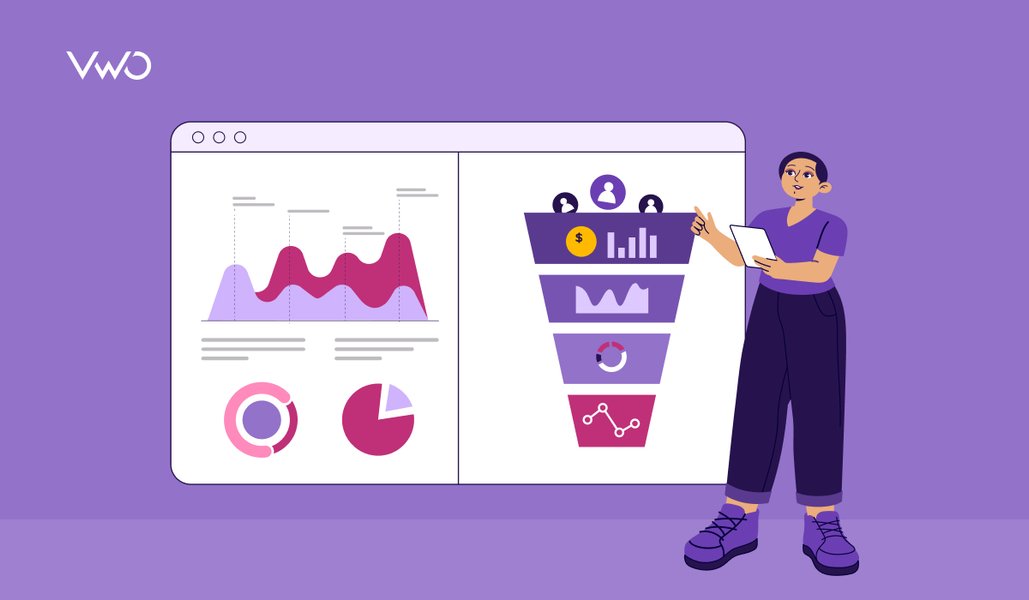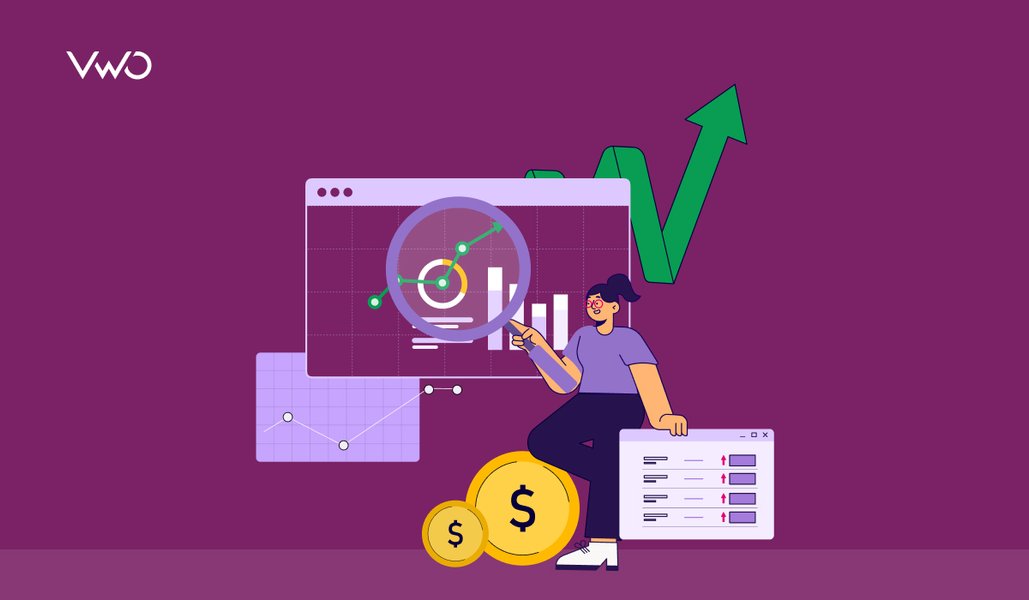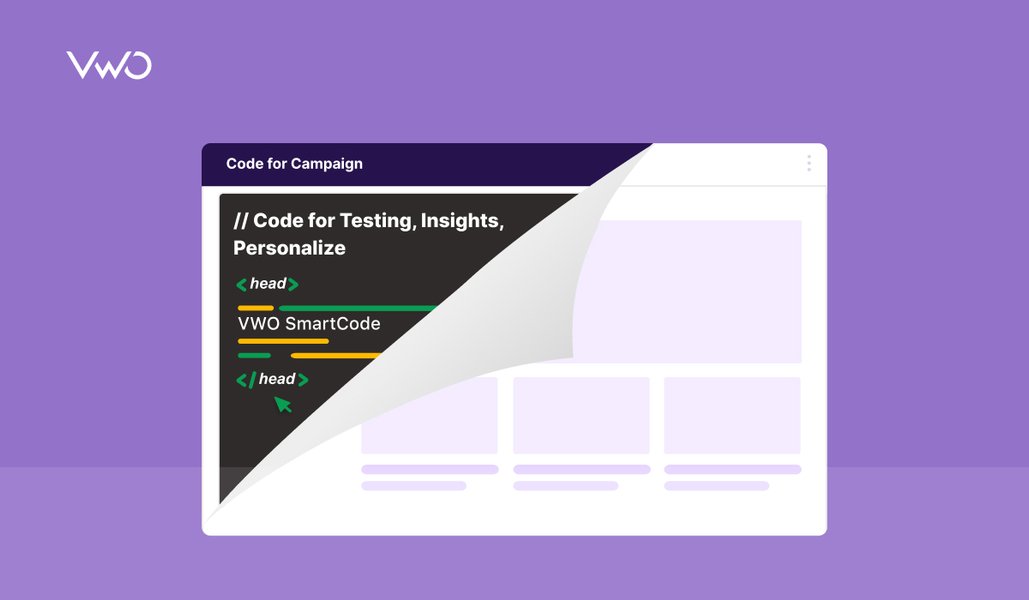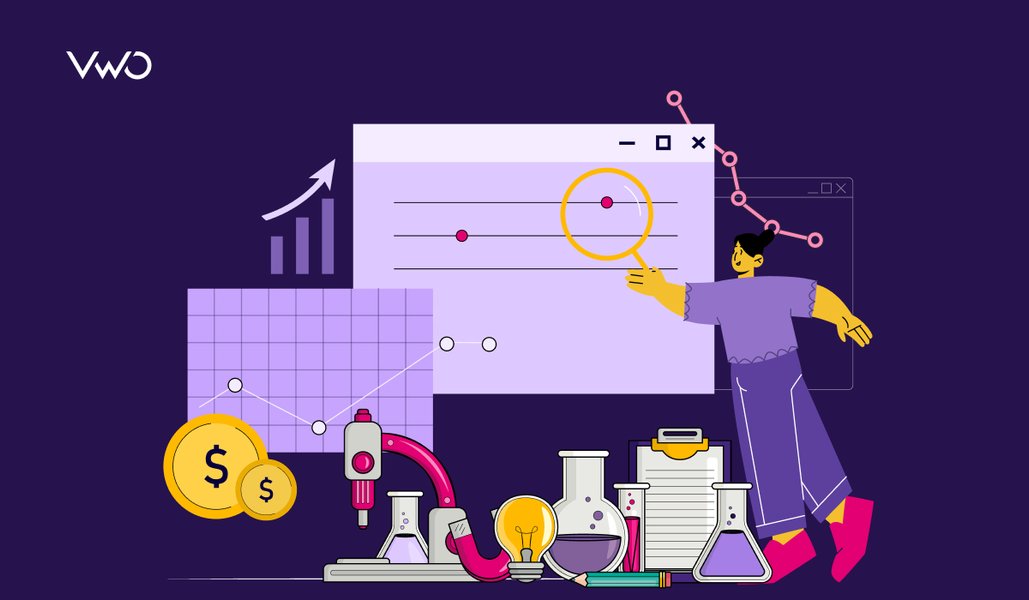Micro and Macro Conversions: Choosing the Right CRO Metrics
Clearly defining the key performance indicators or KPIs is the first step to any Conversion Rate Optimization (CRO) campaign. It is only through tracking and measuring results on these KPIs that a business can optimize for growth.
The KPIs in CRO can be broadly divided into two categories: macro and micro conversions (or goals).
- Macro conversions are the primary goals of a website. Examples of macro conversions for SaaS, eCommerce, or any other online enterprise could be revenue, contact us, request a quote, and free-trial.
- Micro conversions are defined as steps or milestones that help you reach the end goal. Micro conversion examples would include email clicks, downloads on white paper, blog subscriptions, and so on.
Download Free: Improve Conversions In 60 Days Guide
Improving macro goals is imperative to the growth of any enterprise. However, it is equally important that enterprises measure micro goals so as to enhance overall website usability. Avinash Kaushik talks on similar lines: “Focus on measuring your macro (overall) conversions, but for optimal awesomeness, identify and measure your micro conversions as well.”
In this blog post, we discuss why enterprises should:
- Track Micro Conversions Alongside Macro Conversions
- Optimize Micro Conversions That Impact Macro Conversions
Track Micro Conversions Alongside Macro Conversions
Each micro conversion acts as a process milestone in the conversion funnel and impacts the ultimate step, or macro conversion. The following example explains this in a simple manner. Let’s take the case of a regular conversion funnel of a SaaS website. The funnel starts at the home page and ends with a purchase.
The visits from the home page to the features page and from the features page to the pricing page are micro conversions in this example. These micro conversions have the same end goal, that is, “purchases”.
If we were to double micro conversions from the home page to the “features” page, the result would be almost same as shown in the table below:

The number of completed purchases, that is, the macro conversion, also doubled. This example illustrates how micro conversions can have an impact on the macro conversions in a funnel.
 Dr. Flint McGlaughlin, Managing Director and CEO of MECLABS, shares the same thought “The funnel represents and should be thought of as a representation of what is the heart of marketing, and that is a series of decisions. Those decisions are key transitions; I would call them micro-yeses. There are a series of micro-yeses necessary to help someone achieve an ultimate yes. The Ultimate Yes is the sale in most cases. At each of these junctures, we have to help people climb up the funnel.”
Dr. Flint McGlaughlin, Managing Director and CEO of MECLABS, shares the same thought “The funnel represents and should be thought of as a representation of what is the heart of marketing, and that is a series of decisions. Those decisions are key transitions; I would call them micro-yeses. There are a series of micro-yeses necessary to help someone achieve an ultimate yes. The Ultimate Yes is the sale in most cases. At each of these junctures, we have to help people climb up the funnel.”
While there are a number of reasons why micro conversions should be tracked, here are the two main arguments:
- Micro conversions help you assess buyer readiness, or intent.
- Micro conversions help you assess points of friction in a buyer’s journey.
Micro Conversions Help You Assess Buyer Readiness or Intent
All visitors who land on your website don’t have the intent to make a purchase. Some of them could be running a quick comparative research while others could be checking out your products or services during their first visit. Tracking micro conversions helps you understand whether a visitor could be a potential customer. For instance, tracking micro conversions, such as downloading a product brochure or adding a product to a wishlist, shows the future possibility of conversions on a macro goal.
NN Group has defined micro conversions as, “These are not the primary goals of the site, but are desirable actions that are indicators of potential future macro conversions.”
These micro conversions, or secondary goals, are worth tracking as they clearly show that a visitor might have an interest in your business or product.
Here is an example:
PriceCharting conducted a preliminary A/B test to study if their buyers intended to buy from them at higher prices. They used the learning from this preliminary test for future testing. The objective of the test was defined as: Figuring out how price sensitive were the customers. On the “control,” they used “Starts at $4” next to the “Price Guide” CTA. Two other variations were studied against control. One of them stated a starting price of $2 next to the CTA, and the other mentioned $1 as the starting price.


The test results showed that the variation which stated the highest buys won the most clicks on the “Pricing Guide” CTA. This implied that people visiting PriceCharting valued their products and showed readiness to buy even at higher prices. The learning from this exercise for PriceCharting’s future tests was that price was not a major factor influencing their visitors.
Micro Conversions Help You Assess Points of Friction in Your Buyer’s Journey
Along with providing a complete view of your buyer’s journey, tracking micro conversions also helps identify drop-offs on the conversion funnel. For example, on an eCommerce website, users frequently visiting the product page but not adding products to cart implies something is putting off the visitors for moving from “product” to “add-to-cart.” Optimizing the micro goal here, which is increasing “add-to-cart” actions, will ultimately result in increased revenue.
Here’s an example of a multi-step sign-up form on a SaaS website. Suppose many users do not complete the form. By tracking micro conversions on the form, you will be able to identify the friction points. Maybe one of the steps in the form that asks for credit card information of users brings the most friction. With this knowledge, you can assess where users lie in their buyer journey and optimize the form accordingly. Optimizing each step in the form or micro conversions will help you improve your macro conversion.
When testing, the primary goal in the above examples can be to improve micro conversions. A case study by VWO talks about how displaying a banner for top deals increased engagement by 105% for eCommerce client Bakker-helligom. Ben Vooren, an online marketer at Bakker, realized that visitors go to the information pages and read the information, but leave without buying from the website, which was the macro goal. This was the friction that Ben wanted to address. He hypothesized that adding commercially-focused banners at the top of all the information pages (micro goal) will help resolve this friction. The test was run for 12 days on 8,000 visitors. The winning variation led to a 104.99% increase in visits to the “top deals page” and a statistical significance of 99.99%.
Download Free: Improve Conversions In 60 Days Guide
Optimize Those Micro Conversions Which Impact Macro Conversions
While running an A/B test for multiple variations, studying micro conversions on each of those variations can provide valuable insights. It can show you which changes impacted micro conversions, resulted in improved macro conversions, and which ones did not. As we mentioned, there are a number of micro conversions that you can look to optimize. But not all of these would contribute equally to macro conversions.
For instance, to optimize an eCommerce product page with macro goal of “increasing checkout”, there could be a number of test variations that you can run:
In Variation 1 the CTA ‘add to wish-list’ is made prominent
In Variation 2 the CTA ‘save for later’ is made prominent
Both of these variations will not yield the same impact on the macro goal of increasing checkouts. You may realise that making the “save for later” CTA more prominent is yielding more increase in checkouts. So you would want to prioritize that micro conversion in the subsequent tests.
That said, when running a conversion rate optimization program, the test goal should be set as close to revenue as possible. There are two scenarios explained here wherein optimization for micro conversions can prove disastrous:
When Macro Conversions are Not Considered
Solely optimizing for micro conversions without considering how it impacts a major business goal is a total waste of time and efforts.

Peep Laja from ConversionXL says, “If you don’t have enough transaction volume to measure final purchases or revenue, that sucks. But if you now optimize for micro conversions instead, you might be just wasting everyone’s time as you can’t really measure business impact.”
For example, an eCommerce website can increase micro conversions (visits from the home page to the product page) by making the menu bar prominent on the home page. This change might result in higher visits to the product page. However, if you are not tracking the impact of this change on macro conversion (checkouts), the whole optimization process would lack direction.
When the Focus is on Quick Results
A/B tests with macro conversions as the primary goal can take a long time to provide conclusive results. Conversely, certain tests which measure micro conversions have a lesser testing time.
This happens because macro goals are always less in number in comparison to micro. For statistically significant results, a good amount of conversions on the macro goal are required. This exercise would take comparatively much more time than collecting micro conversions.
For example, on a SaaS website, if your primary goal was to increase visits from “the home page to the products page,” the test will take lesser time (because it has higher traffic) to give conclusive results compared to if the primary goal for the test was “Request a Demo.”
However, testing micro conversions with the objective of completing an experiment faster can lead to failure. While you can track different micro conversions, each of them may not result in a winning variation. This happens because each of those micro conversions might not directly lead to a lift in conversion rates. The false Micro-Conversion Testing Assumption example explained in a post on WidderFunnel, is one example that explains this. The gist of the proposed example is that optimizing micro conversions by assuming an equal drop-off at each stage of the funnel ultimately led to the loss of revenue.
Want to delve deeper to know the key elements that can help you run your CRO program the right way? Watch the webinar below:
Conclusion
The success of a CRO program rests on how well you define your micro and macro goals. The closer your micro goals are to the end goal in the funnel, the higher are your chances of getting a winning variation. On the other hand, tracking micro conversions and improving them can help you enhance the overall UX of your website.
What metrics are you tracking and optimizing for your conversion rate optimization program? Drop us a comment and let us know.

